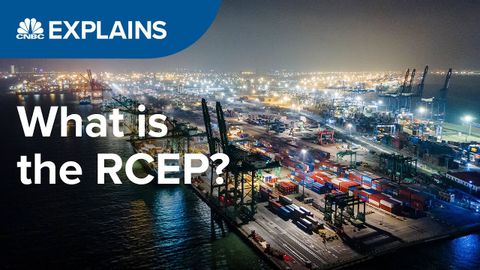
Subtitles & vocabulary
What is the RCEP? | CNBC Explains
00
Summer posted on 2020/12/15Save
Video vocabulary
strategy
US /ˈstrætədʒi/
・
UK /'strætədʒɪ/
- Noun (Countable/Uncountable)
- Careful plan or method for achieving a goal
- Branch of military dealing with command
A2TOEIC
More initiative
US /ɪˈnɪʃətɪv/
・
UK /ɪ'nɪʃətɪv/
- Noun (Countable/Uncountable)
- Ability to come up with solutions by yourself
- New plan or idea that is meant to fix a problem
B1TOEIC
More intellectual
US /ˌɪntlˈɛktʃuəl/
・
UK /ˌɪntəˈlektʃuəl/
- Noun (Countable/Uncountable)
- connected with or using a person’s ability to think in a logical way and understand things
- a person who is well educated and enjoys activities in which they have to think seriously about things
- Adjective
- Relating to the intellect or mental understanding.
- Appealing to or requiring the use of the intellect.
B1
More incentive
US /ɪnˈsɛntɪv/
・
UK /ɪnˈsentɪv/
- Noun (Countable/Uncountable)
- Something that encourages you to do something
- Adjective
- Serving to encourage or motivate.
B1TOEIC
More Use Energy
Unlock All Vocabulary
Unlock pronunciation, explanations, and filters
